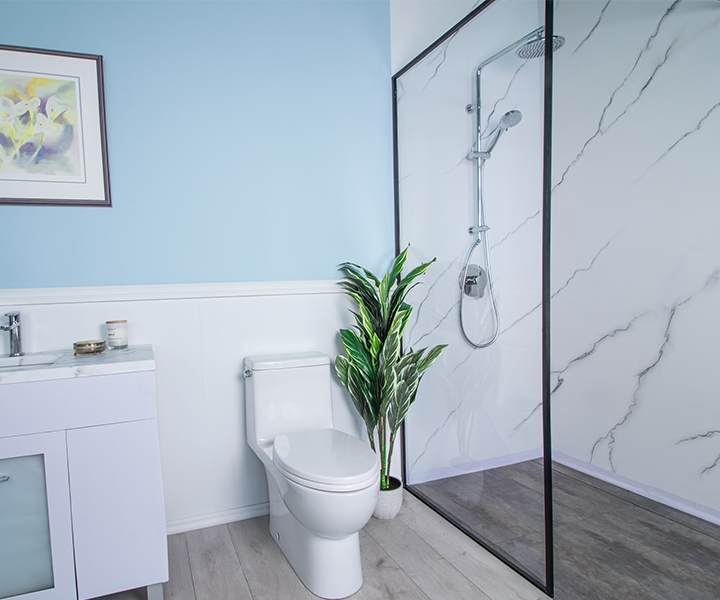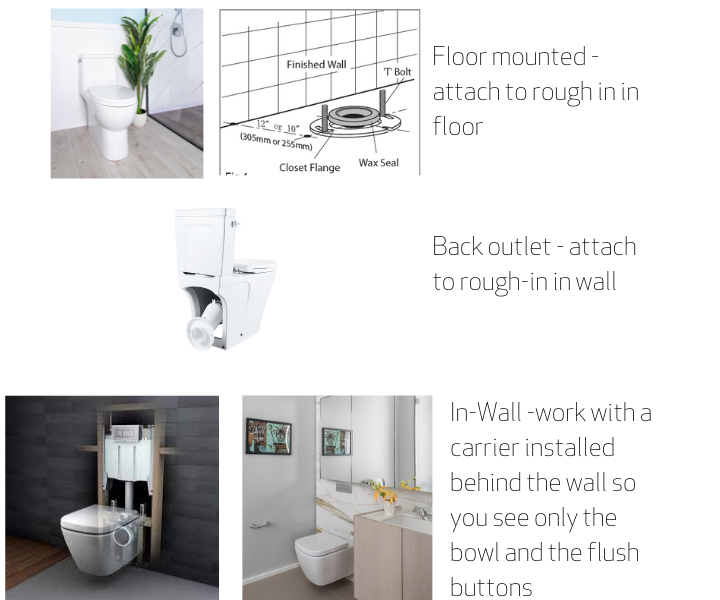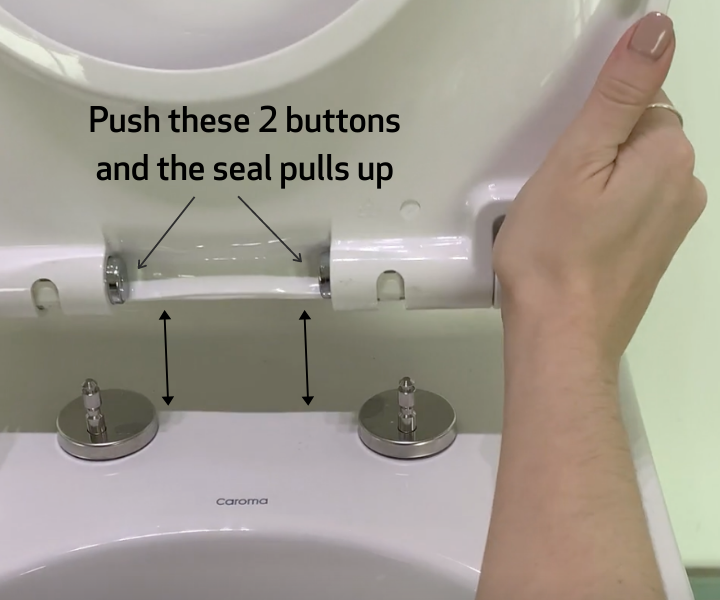- Resources
- Insider Tips
- Toilets made easy; 8 things you need to know before buying a new toilet
Toilets made easy; 8 things you need to know before buying a new toilet

How are you supposed to choose a new toilet if you don't understand the choices? We are here to make it easier...
Choosing a new toilet can sometimes feel like buying a new car, with all kinds of terms and descriptions that aren't necessarily common knowledge. How are you supposed to choose if you don't understand the choices? We are here to make it easier for you with this list of toilet terms:
Single or Dual Flush
Single flush simply means that your toilet has one flushing option. For example, if a toilet is a 3.5 gallon, single flush toilet, it will usually have a lever flush and every time you flush, it will use the same amount of water.
Dual-flush toilets offer two flushing options in an effort to maximize water saving. One flush volume is used for solid waste and a much lower flush volume is used for liquid waste, based on the principle that liquid waste simply doesn't require the same amount of water to be efficiently removed from the bowl and down the drain line. Dual-flush can use either top mounted button flush actuators or lever handles.
HET
This stands for High Efficiency toilet and refers to a toilet that uses no more than 1.28 gallons/4.8 litres per flush. You may also see UHET - which is a newer term mean Ultra High Efficiency.
Elongated or Round Front
A toilet bowl length is measured from the bolt holes to the tip of the bowl. An elongated bowl measures approximately 18" - 19" while a round front measures approximately 16" - 17".
Elongated bowls are required for ADA, (American Disabilities Association), installations, and are generally considered to be more hygienic and comfortable for the average adult. Round front toilets are still required, however, when space is of great concern.

Standard or Easy Height
Toilet heights were developed over 100 years ago, when the population was considerably shorter. A few decades ago, choosing an Easy-Height toilet was quite a bit more expensive than a standard height toilet. This was when Easy-Height toilets were considered appropriate only for those with disabilities, (making it easier to transfer from a wheelchair to a toilet), and typical homes used standard height bowls. But now, with the realization that Easy-Height is much more comfortable, especially for those approaching 6 feet in height, easy-height is by far the more popular choice. It is much easier to get up from an Easy-Height toilet, making them perfect for aging in place and for those suffering from arthritis. Because most toilets sold are now Easy Height, they are no longer more expensive than standard height toilets.

One Piece or Two-Piece
This term refers to whether a toilet was manufactured in one piece, or in two pieces, (tank and bowl) that are designed to be connected upon installation,.
A two-piece toilet is less expensive as it is easier to make. They are a bit more difficult to clean in that you have to clean the area between the tank and bowl as dirt and debris can accumulate in the cracks between them.
A one-piece toilet is made in one piece, which is more complicated and expensive to produce. They are therefore more expensive to purchase. One Piece toilets are generally considered attractive options for toilets and are easier to clean as there is no gap between the tank and bowl.

Skirted bowl or non-skirted, (with an exposed trapway).
While many aren't familiar with this terminology, once you see the two options side by side you will instantly understand. A fully skirted bowl has a clean, uniform side. You don't see the outline of the trapway on the side. They are a cleaner, more attractive bowl that are much easier to keep clean. An unskirted bowl features an exposed trapway.; the outline of the line that waste goes down to meet up with your sewer. They are less attractive and dirt and dust can settle within the curves, making it more time consuming to clean.

Floor mounted, Back Outlet or in-wall toilets.
A floor mounted toilet is a toilet that is installed over a waste outlet cut into the floor. When installing a toilet of this type, a wax ring is used to seal the waste outlet and the toilet is positioned over top. This is the standard and least expensive way to install a toilet.
A back outlet toilet is installed to a waste outlet cut into the wall. Back Outlet toilets save space, especially in high rise buildings, as not as much room is required between floors to accommodate the plumbing lines. They can simply be installed behind the walls. This also saves the builder from having to cut holes into the flooring.

In-Wall toilets use an in-wall carrier that is installed behind the wall. The tank is hidden behind the wall and the bowl is mounted to the carrier. The only part visible within the bathroom is the toilet bowl and button kits to flush. While these are more expensive to purchase and install, they save a lot of space in the bathroom, raise the bowl off the floor making them easier to clean and provide a beautiful finish.
Seats: Standard, Soft-Close, Detachable
Who knew there could be so many toilet seat choices, but there are! A standard seat is a pretty basic seat that is made to fit the size and shape of the bowl. While inexpensive, if you drop the seat down it will create a loud banging noise as the seat hits the bowl.
A soft-Close seat has a hinge built in that prevents the seat from dropping to the bowl. When released, it quietly and slowing lowers to the seat, preventing the annoyance of loud banging seats.
A detachable, or quick release seat features quick release buttons that allow you to easily remove the seat for regular and effective cleaning. A quick release seat would generally also include the soft-close feature.

Once you understand the basics, then you can choose the actual style you want! Happy shopping!

